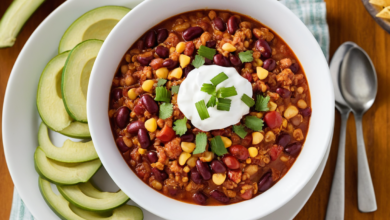A Journey Through History: Traditional Pasta Recipes from the Past You Must Try

Pasta is one of the world’s most beloved foods, with a history that spans centuries and cultures. While modern-day pasta dishes like spaghetti Bolognese and fettuccine Alfredo are well-known, pasta’s roots stretch deep into history, shaped by different regions and evolving over time. From humble, rustic recipes to indulgent feasts enjoyed by nobility, pasta has undergone many transformations.
In this article, we’ll take a journey back in time to explore some of the most iconic pasta recipes from history. These traditional dishes not only offer a glimpse into the past but also reveal the creativity and resourcefulness of ancient cooks. If you’re a fan of pasta, these recipes are a must-try for adding a historical twist to your kitchen!
The History of Pasta
Contrary to popular belief, pasta wasn’t solely an Italian invention. While Italy is often credited with perfecting it, pasta-like dishes date back to ancient civilizations such as China, Greece, and the Middle East. By the 13th century, pasta became a staple in Italy, particularly in the southern regions, where it was paired with local ingredients like tomatoes, olive oil, and seafood.
Pasta was seen as a food for both the rich and poor. It could be made with simple, inexpensive ingredients but also elevated into decadent meals for aristocrats. Let’s dive into the key historical pasta recipes that have stood the test of time.
1. Ancient Roman Lagane: The Original Lasagna
What is it?
Before lasagna became a layered, cheese-filled casserole, the Romans enjoyed lagane, a precursor to modern-day lasagna. Lagane were flat, wide strips of dough made from flour and water, much like the pasta sheets we use today. However, they were typically served with legumes like chickpeas, not tomato sauce or cheese.
Ingredients:
- 2 cups all-purpose flour (or whole wheat flour for authenticity)
- Water (enough to form a dough)
- Olive oil
- Fresh herbs (rosemary, thyme, or parsley)
- Cooked chickpeas
- Salt and pepper
Instructions:
- Mix flour with water to form a dough. Roll out the dough into thin sheets and cut it into wide strips.
- Boil the strips in salted water until tender.
- In a pan, heat olive oil and sauté fresh herbs. Add cooked chickpeas, season with salt and pepper, and toss with the cooked pasta.
- Serve warm as a simple, rustic dish.
Fun Fact: Lagane is one of the earliest recorded pasta dishes, mentioned in the works of ancient Roman poets like Horace. It’s a testament to how pasta was a part of everyday Roman meals.
2. Sicilian Pasta con le Sarde: A Recipe from the Middle Ages
What is it?
Sicilian cuisine has always been a melting pot of influences, with Pasta con le Sarde (pasta with sardines) being a prime example. Introduced in the Middle Ages by Arab settlers, this dish combines sardines, pine nuts, and wild fennel with pasta. The result is a unique, flavorful dish that balances savory and sweet flavors.
Ingredients:
- 12 oz bucatini or spaghetti
- 4-5 fresh sardines (cleaned and deboned)
- 1/4 cup olive oil
- 1 onion, finely chopped
- 1/4 cup pine nuts
- 1/4 cup raisins
- 1/2 cup breadcrumbs (optional)
- A handful of wild fennel (or regular fennel)
- Salt and pepper
Instructions:
- Cook the pasta until al dente.
- In a pan, heat olive oil and sauté onions until soft. Add the sardines and cook until they break apart.
- Stir in pine nuts, raisins, and chopped fennel. Season with salt and pepper.
- Toss the cooked pasta with the sardine mixture, and top with breadcrumbs if desired.
Fun Fact: This recipe, dating back to the 10th century, symbolizes the diverse cultural heritage of Sicily, blending Arab, Greek, and Italian culinary traditions.
3. Renaissance-Style Maccheroni alla Genovese
What is it?
During the Renaissance, pasta became a symbol of culinary refinement. Maccheroni alla Genovese is a pasta dish originating from Genoa, prepared with a slow-cooked onion and meat sauce, much like a precursor to modern ragù. The sauce was rich and hearty, perfect for the nobility who indulged in more elaborate meals.
Ingredients:
- 12 oz short pasta (maccheroni or rigatoni)
- 1 lb beef (cubed)
- 4 large onions, finely sliced
- 1/4 cup olive oil
- 1/2 cup white wine
- Salt and pepper
- Fresh parsley for garnish
Instructions:
- In a large pot, heat olive oil and sauté the onions until caramelized.
- Add the beef and brown on all sides. Pour in the white wine and let it reduce.
- Cover and simmer the sauce on low heat for 2-3 hours until the meat is tender.
- Cook the pasta until al dente, then toss it with the meat sauce. Garnish with fresh parsley.
Fun Fact: In the 16th century, pasta was reserved for special occasions, and dishes like Maccheroni alla Genovese were served at banquets for the aristocracy.
4. Naples’ 19th Century Spaghetti alle Vongole
What is it?
By the 19th century, Naples had firmly established itself as the pasta capital of the world. Spaghetti alle Vongole (spaghetti with clams) became one of the most popular dishes in the region. The simplicity of the recipe—pasta, fresh clams, garlic, and olive oil—allows the seafood’s natural flavors to shine.
Ingredients:
- 12 oz spaghetti
- 1 lb fresh clams
- 1/4 cup olive oil
- 4 garlic cloves, thinly sliced
- 1/2 cup white wine
- Fresh parsley for garnish
- Salt and pepper
Instructions:
- Cook the spaghetti until al dente.
- In a pan, heat olive oil and sauté the garlic until fragrant. Add the clams and white wine, cover, and cook until the clams open.
- Toss the cooked spaghetti with the clams and garnish with fresh parsley.
Fun Fact: Spaghetti alle Vongole became popular among fishermen in Naples, and it’s now a beloved dish worldwide, representing the simplicity and quality of Italian ingredients.
Conclusion
Pasta has been a constant throughout history, evolving with different cultures and regions. Whether it’s the rustic lagane of ancient Rome or the indulgent spaghetti alle vongole from Naples, these historical recipes offer a glimpse into how pasta was enjoyed centuries ago. Each dish is a testament to the ingenuity of cooks who transformed simple ingredients into something extraordinary.
As you try these traditional pasta recipes from history, you’ll not only enjoy delicious flavors but also connect with the culinary heritage of the past. Bon appétit!





